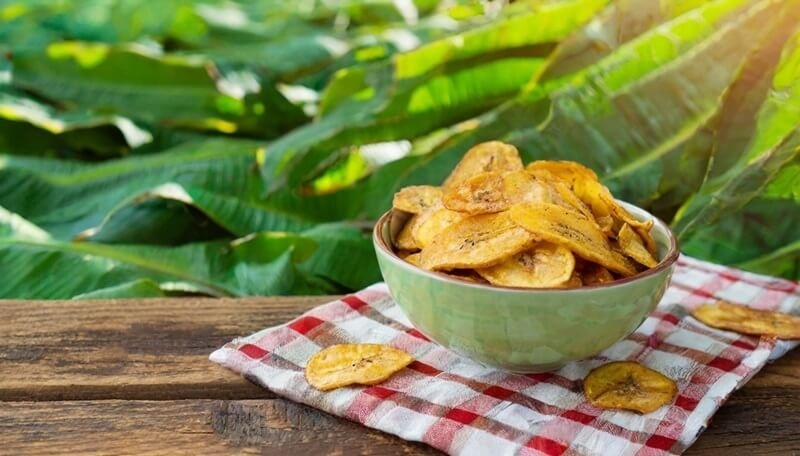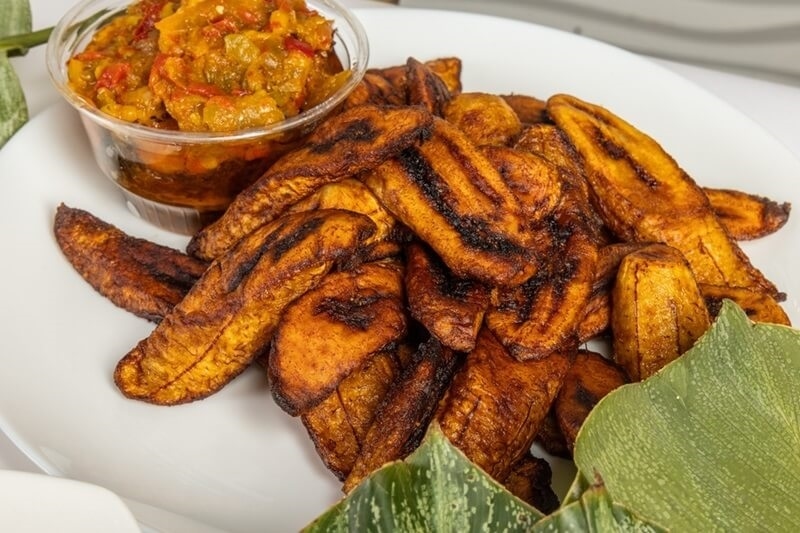
You are not alone if you have ever cooked fried plantains at home but ended up with soggy slices instead of golden, crispy goodness! Knowing how to fry plantains takes more than just throwing plantains into hot oil. If you want to know how to cook sweet plantains, find an authentic African street food plantain recipe, or learn professional frying shortcuts, this article has everything you need to avoid frustrations in the kitchen.
Plantains are essential in African, Caribbean, and Latin American cuisine. Because of their rich flavor, versatility, and cultural significance, they can be found in street food carts and fine-dining restaurant tables. However, frying plantains authentically is an art form that depends on a ripe fruit selection, knowing the temperature of the oil, and using tested preparation methods. This complete guide will show you everything you want to know.

Before we delve into recipes, let's review the essential frying suggestions that all cooks should know. These basics will help you produce fried plantains that are crispy on the outside and tender on the inside every time.
Cut diagonally for greater surface area and crunch. Even cuts are better. Slices cook consistently and avoid sogginess.
Heat oil to 350°F–365°F. Too low and soggy fried plantains will become impossible; too high and they will burn before cooking through.
If you try to fry too many plantains at once, the oil temperature will drop, and the plantains will cook unevenly.
Remember to drain them for a consistent amount of time after frying to ensure you are removing the moisture in the excess oil.
You must know how to cook sweet plantains to enjoy sweet and caramelized flavors. The process is common throughout Latin America, particularly in Cuban and Puerto Rican cooking.
The sweeter the plantain is, the riper it is. Opt for deep yellow skin with black stripes.
Diagonal slices approximately 1/2" thick are ideal for cooking sweet plantains.
Either peanut oil, vegetable oil, or sunflower oil is best.
Natural sugars will caramelize evenly and not burn if you do it on medium heat.
For flavor and texture, sprinkle them with cinnamon sugar for taste, finish them with a honey drizzle, or finish off with sea salt.
Follow these directions, and you will have sweet plantains that are golden, rich, and flavorful. You won't have to ask yourself why they don't taste like the ones from the authentic restaurants anymore!
One of the most annoying results in the kitchen is soggy fried plantains. The important thing is that you can keep fried plantains from becoming soggy by taking one or all of these tips:
These hacks ensure a crispy texture each time.
Few foods capture the colors of dynamic African cuisine like fried plantains. Also called "dodo" in Nigeria and widely hawked by street food vendors, this African street food plantain recipe is easy and satisfying.
Ingredients
Instructions
This recipe pairs well with jollof rice, beans, or grilled meats. It is comforting food that has an identity as a type of African street food.
Green plantains are even starchier than normal ripe plantains, but with ripe plantains, you can prepare whichever you desire, and naturally ripe plantains have a naturally sweet, nutty flavor. Ripe plantains are suitable for stews, baked desserts, or pan-fried snacks. Here are a couple of uses for them:
Plantains can be eaten ripe, fried, baked, or grilled, filling you up.
Not even a professional chef uses plantain frying secrets to make everything come out just perfect to your liking.
Here are a few secrets from the insiders:
Using these tricks, your plantains will taste and look like they are made in a professional kitchen.
Even though frying can add a lot of calories, the plantain itself has great nutrients:
When fried correctly and in moderation, fried plantains are tasty and healthy.
With the best tips for frying plantains, people still make mistakes. Mistakes to avoid:
Learning from these mistakes will significantly enhance your outcomes.
Fried plantains are at their best as a side dish or snack. Here are my recommendations for pairings:
Plantains are very common in the kitchen because they are versatile.
If you forget everything else, remember these basic things:
Choose ripeness according to the level of sweetness you want.
Using the methods we discussed for frying plantains, you'll never have to eat limp or bland plantains again! Each piece will be golden and deliciously crispy, whether you are following a recipe for how to cook sweet plantains, recreating an African street food plantain recipe, or simply trying some different plantain frying tricks.
Once you understand the best frying plantain methods, you will transform ordinary ingredients into crispy, golden treasures every single time. Choosing the best ripeness, oil temperature, and smart plantain frying tips are helpful practices to help avoid soggy fried plantains and enjoy authentic taste and flavors. Whether your cooking style replicates an African street food plantain recipe or learning how to fry sweet plantains, the goal is to create consistency and take care. After a few 'practices,' plantains will become one of your favorite dishes and one of your kitchen's most versatile and crowd-pleasing dishes.
Q1: What oil is best for frying plantains?
Vegetable, sunflower, or peanut oil is best because it can withstand heat without overpowering the flavor.
Q2: Can I fry plantains without oil?
Yes. You can pan-fry using a bit of coconut oil or even bake for a healthier option, but regular frying yields the crispiest results.
Q3: How do I determine if my plantains are ripe enough for sweet frying?
Check for yellow skin with a lot of black spots. The sweeter, the darker.
Q4: Why do my plantains stick to the pan?
The oil might not be hot enough, or the pan might not be right. A nonstick or cast-iron skillet avoids sticking.
Q5: Are fried plantains healthy?
They're full of nutrients but calorie-rich when fried. Eat in moderation as part of a healthy diet.
This content was created by AI